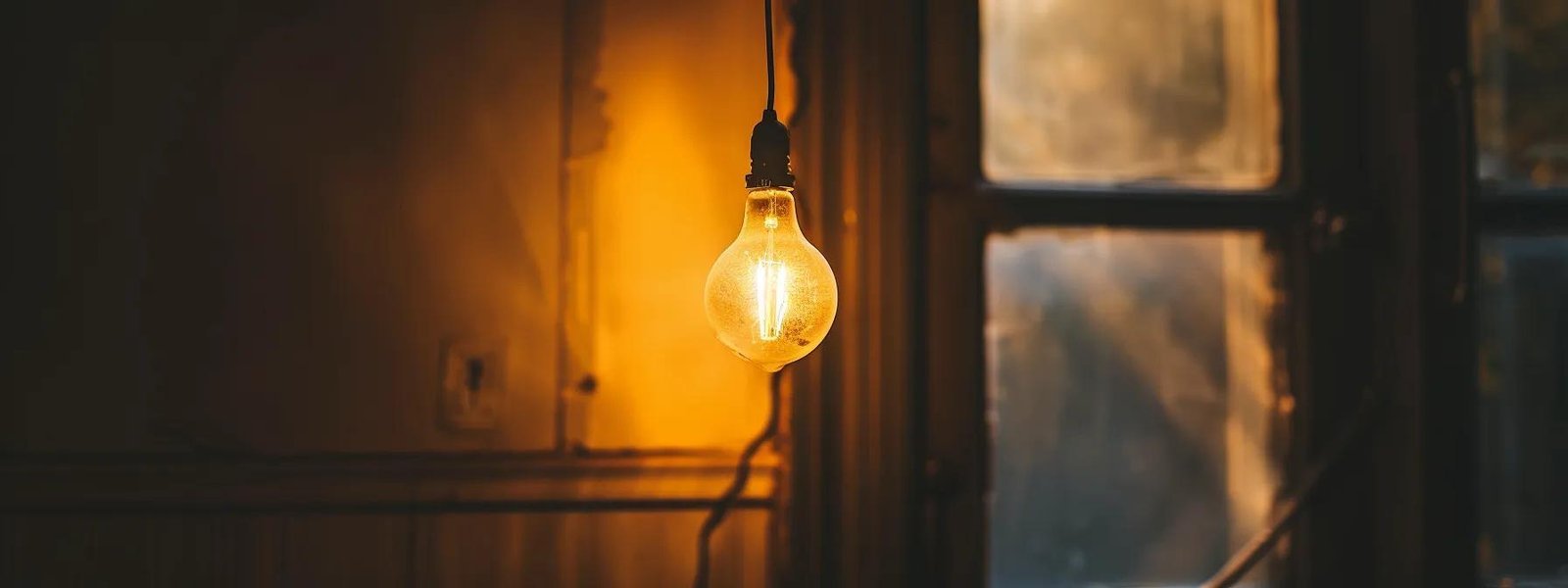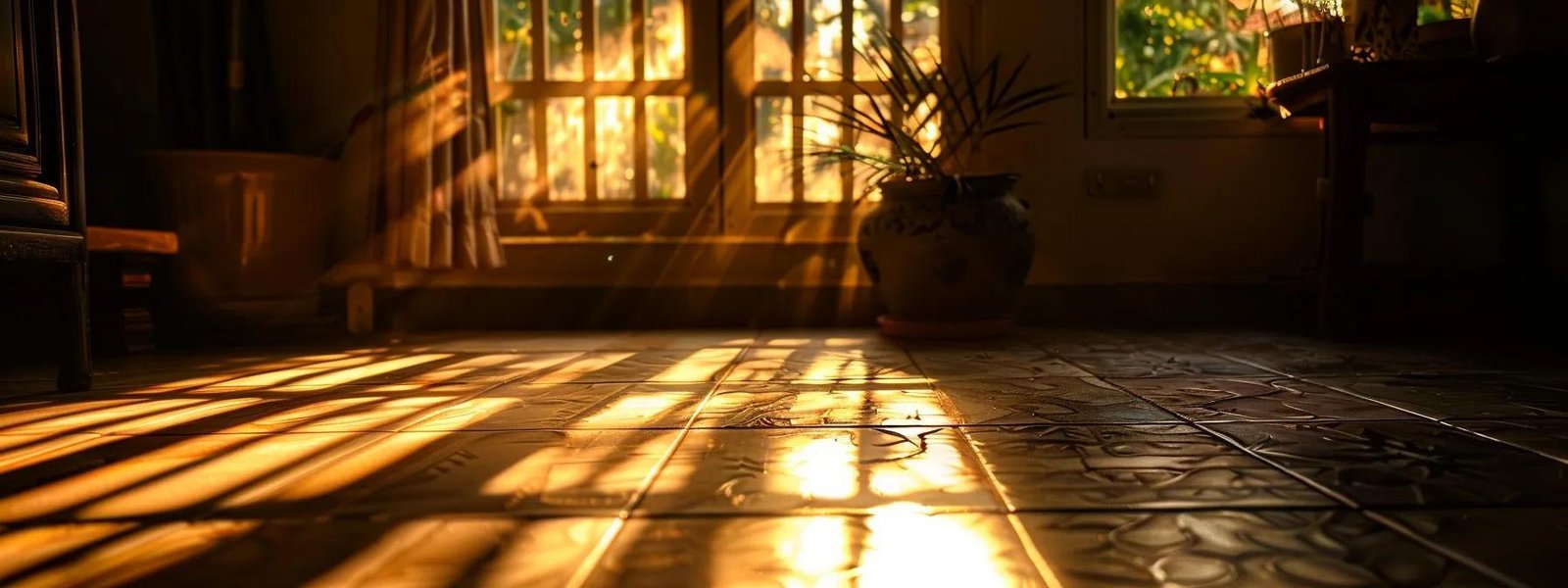
Flickering lights can be more than just an annoyance; they may signal underlying electrical issues that could pose safety risks. This article will explore common causes behind flickering lights, the potential dangers they present, and when to seek professional help. By understanding these concerns, homeowners can take proactive steps to ensure their electrical systems are safe and efficient. If flickering lights are disrupting your home, this guide will provide valuable insights into electrical diagnostics and solutions, helping you maintain a secure living environment.

Flickering lights can signal various electrical issues that may affect safety and comfort. Common causes include loose or faulty light bulbs, which can lead to inconsistent current flow, and problems with light switches or dimmers that disrupt frequency. Additionally, issues with electrical wiring, fluctuations in voltage supply, and overloaded circuits can contribute to flickering, potentially causing eye strain and damaging equipment. electrical diagnostics can help identify and resolve these issues efficiently.
Loose or faulty light bulbs are a common cause of flickering lights, which can raise significant safety concerns. When a bulb is not securely fitted in its light fixture, it can create distortion in the electrical current, leading to inconsistent lighting. Homeowners should regularly check their bulbs as part of a safety checklist, ensuring proper thermal management to prevent overheating and potential fire hazards.
Issues with light switches or dimmers can significantly contribute to flickering lights, posing a potential hazard for homeowners. A malfunctioning switch may disrupt the electrical flow, increasing the risk of electrical shorts or overheating. Regular electrical inspections can help identify these problems early, ensuring that all electronics function safely and efficiently.
Problems with electrical wiring can lead to flickering lights, indicating potential safety hazards within the electrical system. Loose wiring connections can disrupt the flow of energy, causing bulbs to flicker or dim unexpectedly. Homeowners should prioritize troubleshooting these issues, as addressing wiring problems early can prevent more significant electrical failures and ensure a safe living environment.
Fluctuations in voltage supply can cause lights to flicker, indicating potential issues within the electrical service. These fluctuations may arise from various sources, including problems with the electrical wiring or the electrical cable that connects to the home. Homeowners should be aware that inconsistent voltage can not only disrupt lighting but also damage sensitive electronics, making it essential to address these concerns promptly.
Overloaded circuits are a significant cause of flickering lights, often resulting from too many devices drawing power from a single circuit. This situation can lead to circuit breakers tripping, which is a safety feature designed to prevent overheating and potential fires. Homeowners should consider scheduling regular inspections to ensure their electrical systems can handle the load, especially during peak usage times, such as when air conditioning units are running. Additionally, overloaded circuits can create electromagnetic interference, which may affect sensitive electronics and even trigger issues for individuals with epilepsy.

Flickering lights can indicate serious electrical dangers that homeowners should not ignore. The risk of electrical fires increases with inconsistent brightness and faulty wiring, while the potential for electric shocks poses a direct threat to safety. Additionally, flickering can lead to damage to electrical appliances and short circuits, which may result in power outages. Understanding these risks is essential for maintaining a safe home environment.
The risk of electrical fires is a significant concern for homeowners experiencing flickering lights. When lights flicker, it may indicate an overloaded circuit or a voltage drop, which can lead to overheating and potential fire hazards. An electrician can assess the electrical load in the home, ensuring that wattage levels are appropriate for the circuits in use. Regular inspections and prompt emergency service can help identify and resolve these issues before they escalate into dangerous situations.
The potential for electric shocks is a serious concern when dealing with flickering lights. Inconsistent voltage can create dangerous conditions, especially if there are issues with the neutral wire or improper grounding. Homeowners should follow electrical safety tips, such as ensuring that heat sinks are properly installed and that all connections are secure, to minimize the risk of electric shocks. In case of any signs of electrical problems, it is advisable to seek emergency assistance from a qualified electrician to address these hazards promptly.
Flickering lights can lead to significant damage to electrical appliances, particularly those connected to dimmers. Inconsistent voltage can cause appliances to operate erratically, potentially resulting in malfunctions or complete failure. Homeowners should be aware that prolonged exposure to flickering lights may not only affect their devices but could also pose a risk for individuals with seizure disorders, as sudden changes in lighting can trigger episodes. Addressing flickering lights promptly can help protect valuable electronics and ensure a safer living environment.
Short circuits can lead to power outages, creating significant disruptions in a home. When electrical connections fail or become damaged, they can cause a sudden surge of electricity that trips circuit breakers, cutting off power to affected areas. Homeowners should be vigilant about flickering lights, as they may indicate underlying wiring issues that could result in short circuits and subsequent power outages.

Frequent or persistent flickering patterns can indicate serious electrical issues that require immediate attention. If flickering affects multiple areas of the home, it may signal a larger problem within the electrical system. Homeowners should also be cautious of any accompanying burning smells or sounds, as well as discoloration or warmth around fixtures, which can further highlight potential hazards. Each of these signs will be explored in detail to help homeowners recognize when to seek professional assistance.
Frequent or persistent flickering patterns in lights can indicate serious electrical issues that require immediate attention. Homeowners should be particularly concerned if flickering occurs in multiple areas of the home, as this may signal a larger problem within the electrical system. It is essential to consult a qualified electrician to assess the situation, as ignoring these signs can lead to more significant hazards, including electrical fires or equipment damage.
When flickering lights affect multiple areas of the home, it often indicates a more serious electrical issue that requires immediate attention. This widespread flickering can signal problems such as overloaded circuits or faulty wiring, which may pose safety risks like electrical fires. Homeowners should not ignore these signs; consulting a qualified electrician is essential to diagnose and resolve the underlying issues effectively.
Accompanying burning smells or sounds when lights flicker can indicate serious electrical issues that require immediate attention. These signs often suggest overheating wires or faulty connections, which can lead to electrical fires if not addressed promptly. Homeowners should prioritize safety by turning off the affected circuit and consulting a qualified electrician to investigate the source of the problem, ensuring a safe living environment.
Discoloration or warmth around light fixtures is a critical warning sign that homeowners should not overlook. This phenomenon often indicates overheating, which can stem from faulty wiring or improper installation. If homeowners notice any discoloration or excessive heat, it is essential to turn off the power to the affected area and consult a qualified electrician to assess the situation and prevent potential electrical fires.

Diagnosing flickering light issues safely at home involves several key steps. Homeowners should start by inspecting light bulbs and fixtures for secure connections. Next, checking circuit breakers and fuses can reveal potential overloads. Observing patterns related to appliance usage may indicate if specific devices are causing fluctuations. Lastly, monitoring voltage stability is essential to ensure consistent power supply.
Inspecting light bulbs and fixtures is a crucial first step in diagnosing flickering light issues. Homeowners should ensure that bulbs are securely fitted in their sockets, as loose connections can disrupt the electrical flow and cause flickering. Additionally, checking for any signs of damage or wear on the fixtures themselves can help identify potential safety hazards, allowing for timely repairs and maintaining a safe home environment.
Checking circuit breakers and fuses is an essential step in diagnosing flickering light issues. Homeowners should regularly inspect their circuit breakers for any tripped switches, as this can indicate an overloaded circuit that may cause lights to flicker. If a fuse has blown, it may also lead to inconsistent power supply, affecting the performance of lighting fixtures. Understanding how to identify these issues can help homeowners maintain a safe electrical system and prevent further complications.
Observing patterns related to appliance usage can provide valuable insights into flickering light issues. Homeowners should take note of when the flickering occurs, particularly if it coincides with the operation of high-demand appliances like refrigerators, air conditioners, or washing machines. This correlation may indicate that these devices are drawing too much power from the circuit, leading to voltage fluctuations that cause lights to flicker. By identifying these patterns, homeowners can better understand their electrical load and make informed decisions about redistributing appliances or consulting a qualified electrician for further assessment.
Monitoring voltage stability is essential for diagnosing flickering light issues effectively. Homeowners should be aware that fluctuations in voltage can lead to inconsistent lighting and may indicate underlying electrical problems. Using a multimeter to check voltage levels can help identify irregularities, allowing for timely intervention by a qualified electrician to ensure a safe and reliable electrical system.

Preventing electrical hazards from flickering lights involves several key strategies. Scheduling regular electrical inspections can identify potential issues early, while upgrading outdated wiring systems enhances safety. Balancing electrical loads effectively prevents overloads, and installing quality lighting fixtures ensures reliable performance. Additionally, educating household members on electrical safety promotes awareness and reduces risks associated with flickering lights.
Scheduling regular electrical inspections is a proactive measure that homeowners can take to prevent electrical hazards associated with flickering lights. These inspections allow qualified electricians to identify potential issues, such as overloaded circuits or faulty wiring, before they escalate into serious problems. By ensuring that the electrical system is functioning properly, homeowners can enhance safety and maintain a reliable power supply, ultimately protecting their home and valuable electronics from damage.
Upgrading outdated wiring systems is a crucial step in preventing electrical hazards associated with flickering lights. Older wiring may not handle the electrical load required by modern appliances, leading to overheating and potential fire risks. Homeowners should consider consulting a qualified electrician to assess their wiring and recommend necessary upgrades, ensuring a safer and more reliable electrical system.
Balancing electrical loads effectively is essential for preventing flickering lights and ensuring a safe home environment. Homeowners should distribute their electrical devices across multiple circuits to avoid overloading any single circuit, which can lead to flickering and potential hazards. Consulting with a qualified electrician can provide insights into the home’s electrical capacity and help create a balanced load plan, ultimately enhancing safety and reliability in the electrical system.
Installing quality lighting fixtures is essential for preventing electrical hazards associated with flickering lights. High-quality fixtures are designed to handle the electrical load safely, reducing the risk of overheating and potential fire hazards. Homeowners should prioritize selecting fixtures that meet safety standards and are compatible with their existing electrical systems, ensuring reliable performance and peace of mind.
Educating household members on electrical safety is essential for preventing hazards associated with flickering lights. Homeowners should discuss the importance of recognizing warning signs, such as flickering lights or unusual sounds, and encourage everyone to report these issues immediately. By fostering a culture of safety awareness, families can work together to maintain a secure living environment and reduce the risk of electrical accidents.

Consulting professional electricians for persistent flickering lights offers numerous benefits, including expert diagnosis of complex electrical issues. Electricians utilize specialized knowledge to identify underlying problems and implement safety measures. Homeowners can prepare for an electrical service visit by understanding the steps involved, ensuring a thorough and efficient assessment of their electrical systems.
Consulting professional electricians for persistent flickering lights is essential for ensuring electrical safety in the home. These experts possess the knowledge and experience to accurately diagnose complex electrical issues that may not be apparent to the average homeowner. By addressing flickering lights promptly, electricians can help prevent potential hazards such as electrical fires or equipment damage, providing peace of mind and a safer living environment.
Professional electricians utilize a systematic approach to diagnose complex electrical issues, particularly when homeowners experience persistent flickering lights. They begin by conducting a thorough inspection of the electrical system, checking for loose connections, faulty wiring, and overloaded circuits. By employing specialized tools, such as multimeters, electricians can measure voltage levels and identify irregularities that may contribute to flickering, ensuring a comprehensive assessment of the home’s electrical safety.
When homeowners consult professional electricians for persistent flickering lights, these experts take several critical steps to ensure safety. They begin by conducting a thorough inspection of the entire electrical system, checking for loose connections, faulty wiring, and overloaded circuits that could contribute to the flickering. By utilizing specialized tools, such as multimeters, electricians can accurately measure voltage levels and identify any irregularities, ensuring that the electrical system operates safely and efficiently.
Preparing for an electrical service visit is essential for homeowners experiencing persistent flickering lights. Before the electrician arrives, it is helpful to document the flickering patterns, noting when and where they occur, as well as any accompanying issues like unusual sounds or smells. This information can assist the electrician in diagnosing the problem more efficiently and ensuring a thorough assessment of the electrical system.
Understanding the electrical safety concerns of flickering lights is crucial for maintaining a safe home environment. Homeowners must recognize that flickering can signal serious issues, such as overloaded circuits, faulty wiring, or potential fire hazards. Taking prompt action by consulting a qualified electrician can prevent dangerous situations and protect valuable electronics. Prioritizing electrical safety not only enhances comfort but also safeguards the well-being of all household members.


